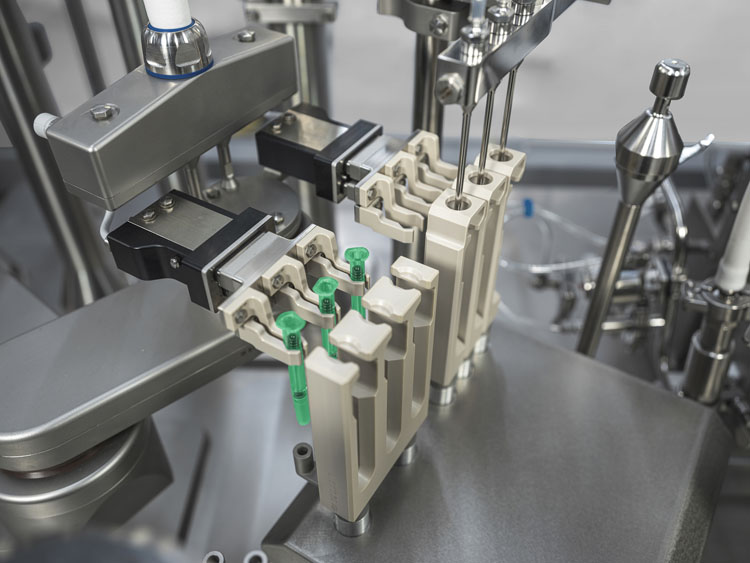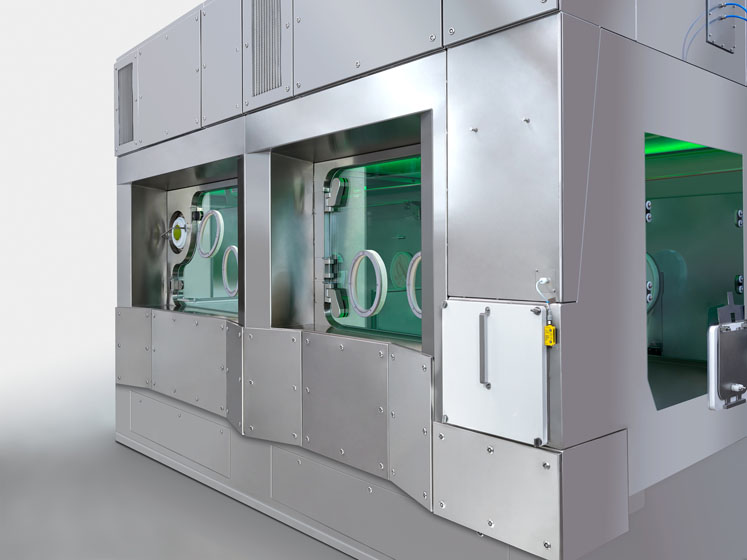This article by Laura Moody, Product Manager, Syntegon Pharma Technology, highlights the changing requirements for the downstream processing of small batch drugs, along with how machine manufactures are adapting to the evolving needs of the industry.
The pharmaceutical landscape looks starkly different compared with what it did just 10 years ago. Although blockbuster medicines and traditional, large batch drugs were and continue to be important contributors to human health, personalised medicine is quickly becoming the focus for future treatment breakthroughs.
The rise of advanced therapy medicinal products (ATMPs) —such as cell and gene therapies and tissue-engineered products — have proven to drug manufacturers that the industry is getting more specialised, with a shift towards smaller batch sizes.
What classifies as small batch?
An exact definition of “small batch” has not officially been coined in ICH guidance for the industry. However, interpretation taken from the US FDA’s “Guidance for Industry, ANDAs: Stability Testing of Drug Substances and Products, Questions and Answers” for generic parenterals lists small batches as at least 10% of the proposed maximum commercial batch size or less than 15,000–60,000 containers (based on fill volume).

Dr Laura Moody
Batch sizes shrink to a few thousand containers for parenterals used in clinical trials. For very specialised treatments (such as autologous cell therapy), one patient equals one batch of approximately 5–10 containers.
Shift in pharma needs
It is apparent that the pharmaceutical industry is investing in and driving the development of ATMPs, as evidenced by the growing cell and gene therapies in pipelines around the world.
Traditional high speed, high output fill-finish machines do not fit the needs of these no-longer-niche applications. The high value of ATMPs results in less tolerance for wasted product.
Even the smallest volumes have the potential to save lives. Therefore, ensuring that each container has the precise amount of drug product is essential.
The focus for manufacturers is now high precision, high-value products with lower outputs as the leading factor for fill-finish processing. These refocused priorities require adaptations in the packaging industry to accommodate changing pharmaceutical manufacturing requirements.
Flexible filling
Flexibility in pharmaceutical production is another increasing prerequisite in the industry. As batch sizes shrink, manufacturers need to fill multiple products on the same equipment, often in varying container types (vials, syringes and cartridges) and sizes, as well as varying sources such as non-sterile bulk, trayed or nested presterilised ready-to-use containers. To this end, single-use technology has seen an explosion in adoption at all stages of pharmaceutical production.
Without the need for manufacturing plant that’s dedicated to individual drugs in a facility, the expensive cleaning validation of said plant and lengthy changeover times, production times and costs shrink … and uptime efficiencies grow.
Having the ability to process a large variety of drug products and containers on the same, multiuse filling line gives pharmaceutical manufacturers the ability to save manufacturing space and be nimble for future opportunities.

“Our requirements focus on the ability to fill a wide variety of products in syringes, vials and cartridges on one filling line, including high potent drug products. This allows us to be highly flexible and eliminates the need for additional lines and space,” says Georg Frinke, Senior Engineering Manager at Ferring Pharmaceuticals.
In response to the changing industry requirements, Syntegon has unveiled its new Versynta product line, which at its core focuses on small batch filling solutions.
The initial offering is the Versynta Flexible Filling Platform (FFP), which has been designed to address the shift towards small batch production and increasing flexibility needs in pharmaceutical manufacturing.
What makes the FFP unique? First, the entire platform is based on standardised modules that can be mixed and matched for each customer’s specific fill-finish needs.
The FFP is outfitted with Syntegon’s own isolator technology with integrated air handling, which means no interfaces to the building; modules can be dropped into the filling suite without the need for a technical space above the installation.
Owing to the standardisation of each FFP module, hydrogen peroxide biodecontamination cycle times are short (while still being fully effective). Additionally, each FFP isolator unit is ready for highly potent applications, with no further development needed.
Robotics serve the entire line for precise and sensitive handling. This both ensures first air supply and also contributes to a substantially reduced number of format parts, eliminating scrolls, guiding and any glass-to-glass contact.
With 100% in-process control (IPC) during the filling process, minimal product loss is assured, with the goal of filling every millilitre of high value product. The FFP handles vials, syringes or cartridges in ready-to-use nest or tray formats. If lyophilisation capabilities are necessary, an integrated module is available.

“One of the strengths of the FFP is the Pharma Handling Unit, our four-axis robot developed by Syntegon that allows safe and gentle transport. It transfers the containers from one station to the next without glass-to-glass contact. The laminar flow-optimised design ensures that the air flow, also known as “first air supply,” reaches the containers and flows around them without obstruction,” says Klaus Ullherr, Senior Product Manager at Syntegon.
The future of pharmaceutical filling
As more and more pharmaceutical manufacturers invest in high value, small batch ATMPs in their development pipelines, industry experts recognise that personalised medicine is not a fad; it’s here to stay.
Downstream manufacturing suppliers need to adapt to the requirements of this evolving market, in which flexibility is a necessity. The introduction of the Versynta product line by Syntegon is just another example of future-focused innovation that stems from real-world needs.
Although the FFP addresses the larger end of the small batch filling range, Syntegon recognises that personalised medicine continues to drive smaller and smaller batch sizes.
In the near future, Versynta microBatch will address the need for a fully automated, gloveless isolator work cell for exceptionally small batch filling.




